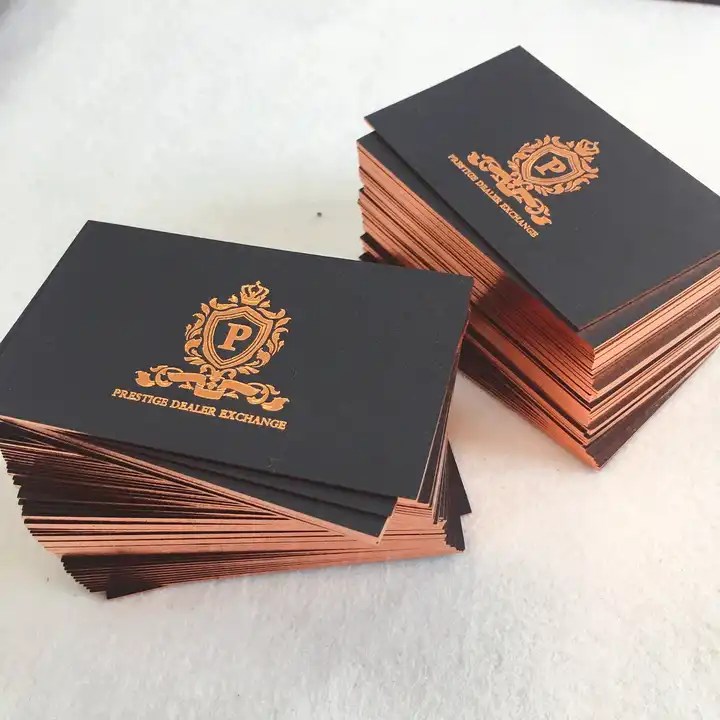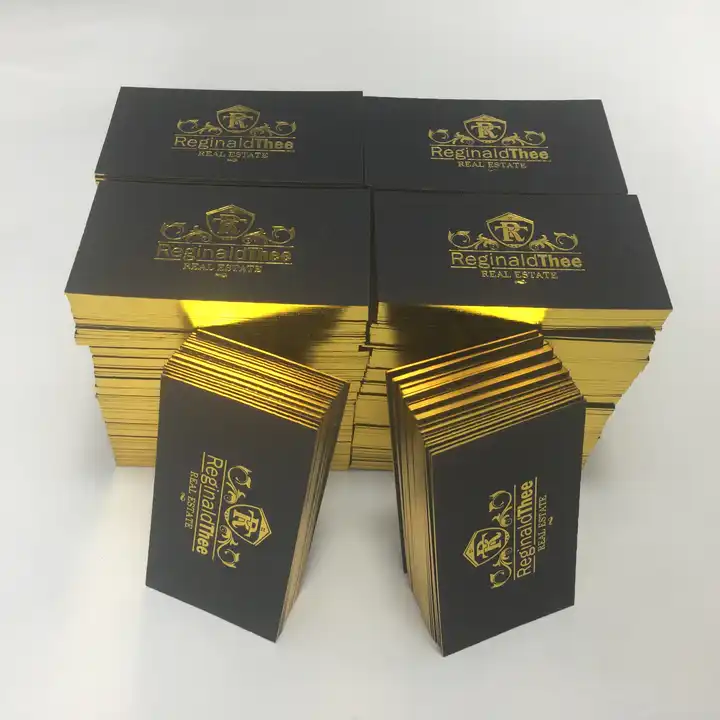Content Menu
● Understanding Business Card Sizes
● Standard Business Card Sizes
● Importance of Size in Business Cards
● Designing Your Business Card
● Common Variations in Business Card Sizes
● Choosing the Right Size for Your Needs
● Printing Considerations
● The Psychology of Business Card Sizes
● Current Trends in Business Card Design
● Conclusion
● Related Questions
>> 1. What is the most common size for a business card?
>> 2. Are there different sizes for business cards in other countries?
>> 3. What should I include on my business card?
>> 4. What does "bleed" mean in printing?
>> 5. Can I create custom-sized business cards?
● Citations:
Understanding Business Card Sizes
Business cards are essential tools for networking and marketing in the business world. They serve as a compact representation of an individual or company, providing key information at a glance. One of the most fundamental aspects of business cards is their size. In this article, we will explore the various dimensions of business cards, their significance, and how to effectively utilize them in professional settings.

Standard Business Card Sizes
The size of a business card can vary significantly depending on the region and purpose. However, there are some commonly accepted sizes that are widely used around the world.
- North America: The standard size is 3.5 inches x 2 inches (88.9 mm x 50.8 mm). This size is popular because it fits neatly into wallets and cardholders, resembling the dimensions of credit cards.
- Europe: The common size is slightly different at 3.35 inches x 2.17 inches (85 mm x 55 mm). This variation accommodates the preferences of European consumers while still maintaining a compact form.
- Asia: Countries like Japan often use dimensions of 3.58 inches x 2.17 inches (91 mm x 55 mm), which also align closely with credit card sizes but offer a bit more height.
- Custom Sizes: In addition to these standard sizes, businesses may opt for custom dimensions, such as square cards (e.g., 2.5 inches x 2.5 inches) or folded cards that can expand to provide more information.
Importance of Size in Business Cards
The size of a business card is not just a matter of aesthetics; it plays a crucial role in functionality and effectiveness:
- Portability: A well-sized business card fits comfortably in wallets and pockets, ensuring it can be easily carried and handed out without inconvenience.
- Design Flexibility: Different sizes allow for various design layouts. For instance, larger cards may accommodate more information or creative designs, while smaller cards can convey a minimalist aesthetic.
- Cultural Considerations: Understanding regional preferences for card sizes can enhance cross-cultural communication and networking opportunities.
Designing Your Business Card
When designing a business card, it's essential to consider not only the size but also the elements that will be included on the card:
- Content: Typical information includes your name, job title, company name, phone number, email address, and website. Depending on the size, you may also include social media handles or a tagline.
- Bleed Area: If your design includes colors or images that extend to the edge of the card, you need to account for a bleed area—typically an extra 1/8 inch (about 3 mm) around the edges to ensure that no white space appears after trimming.
- Font Size and Readability: Ensure that text is legible by choosing appropriate font sizes and styles. A common recommendation is to keep font sizes above 8 pt for clarity.
Common Variations in Business Card Sizes
While we have discussed standard sizes, there are numerous variations that cater to different needs:
- Mini Cards: These are often around 2.75 inches x 1.1 inches, providing a unique way to stand out while still delivering essential information.
- Square Cards: Typically measuring 2.5 inches x 2.5 inches, these cards offer a modern twist on traditional designs.
- Folded Cards: These can be printed at sizes like 3.5 inches x 4 inches, allowing for more extensive content without sacrificing portability.

Choosing the Right Size for Your Needs
When selecting a business card size, consider your industry and audience:
- Corporate Settings: Standard sizes like 3.5 inches x 2 inches are recommended for formal business environments where professionalism is key.
- Creative Industries: If you work in design or arts, experimenting with unique shapes or sizes can help convey creativity and innovation.
- Networking Events: At conventions or trade shows, having an eye-catching card that stands out from others may enhance memorability.
Printing Considerations
When preparing for printing:
- Ensure your design file includes bleed areas if necessary.
- Choose high-quality paper stock that reflects your brand image—thicker cards often feel more premium.
- Consider finishes such as matte or glossy coatings which can enhance durability and appearance.
The Psychology of Business Card Sizes
The size of your business card can influence how recipients perceive your brand or personal image:
- A standard-sized card often conveys professionalism and reliability, making it suitable for traditional industries like finance or law.
- Conversely, unique sizes or shapes can suggest creativity and innovation—ideal for industries such as graphic design or technology.
Understanding this psychological aspect can help you choose a size that aligns with your branding strategy effectively.
Current Trends in Business Card Design
As we move further into 2025, several trends are emerging in business card designs that reflect broader cultural shifts:
- Sustainable Materials: There is an increasing demand for eco-friendly options made from recycled materials or sustainable sources.
- Textured Finishes: Cards with embossed logos or textured surfaces create a tactile experience that can leave a lasting impression.
- Interactive Elements: Incorporating QR codes or augmented reality features allows recipients to engage with your brand digitally after receiving your card.
These trends not only enhance the visual appeal of business cards but also contribute to an overall memorable experience for potential clients or partners.
Conclusion
Understanding the various sizes of business cards is crucial for effective networking and branding strategies. The standard dimensions—3.5 inches x 2 inches in North America and 3.35 inches x 2.17 inches in Europe—serve as benchmarks for designing professional cards that fit seamlessly into wallets while providing essential contact information.
In summary:
- The standard business card size varies by region but typically falls within specific dimensions.
- Size affects portability, design flexibility, and cultural appropriateness.
- Designing your card requires careful consideration of content layout and print specifications.
By keeping these factors in mind, you can create impactful business cards that leave lasting impressions on potential clients and partners.

Related Questions
1. What is the most common size for a business card?
The most common size for a business card in North America is 3.5 inches x 2 inches (88.9 mm x 50.8 mm).
2. Are there different sizes for business cards in other countries?
Yes, different countries have preferred sizes; for example, in Europe, it is typically 3.35 inches x 2.17 inches (85 mm x 55 mm).
3. What should I include on my business card?
Typically include your name, job title, company name, phone number, email address, and website; you may also add social media handles or a tagline if space allows.
4. What does "bleed" mean in printing?
Bleed refers to an area beyond the trim edge of your design that ensures there are no white borders after cutting; it usually adds an extra 1/8 inch around your design.
5. Can I create custom-sized business cards?
Yes! Many printing services offer custom sizes beyond standard dimensions to suit specific branding needs or personal preferences.
Citations:
[1] https://www.zenbusiness.com/blog/business-card-dimensions/
[2] https://looka.com/blog/business-card-trends/
[3] https://ckgd.net/different-business-card-sizes-around-world/
[4] https://smartpress.com/blog/features/business-card-size
[5] https://www.gelato.com/blog/business-card-ideas
[6] https://www.namecheap.com/guru-guides/standard-business-card-size/
[7] https://www.sprintcopy.com/en/tamano-de-tarjetas-de-presentacion-que-dicen-los-expertos-del-diseno-2/
[8] https://www.youtube.com/watch?v=WEsRRuffjS4
[9] https://www.mycreativeshop.com/learn/business-card-size-guide-world-tour
[10] https://epiic.com/blog/business-card-dimensions
[11] https://www.goldimageprinting.com/content/standard-business-card-sizes.html
[12] https://www.designhill.com/design-blog/tips-and-tricks-for-creating-stunning-business-cards/
[13] https://www.indesignskills.com/tutorials/business-card-sizes/
[14] https://www.printplace.com/articles/standard-business-card-sizes
[15] https://www.asianbusinesscards.com/blog/international-business-card-sizes-aspect-ratios/
[16] https://www.moo.com/blog/inspiration/business-card-size-and-dimension-guide
[17] https://www.indeed.com/career-advice/career-development/business-card-tips
































